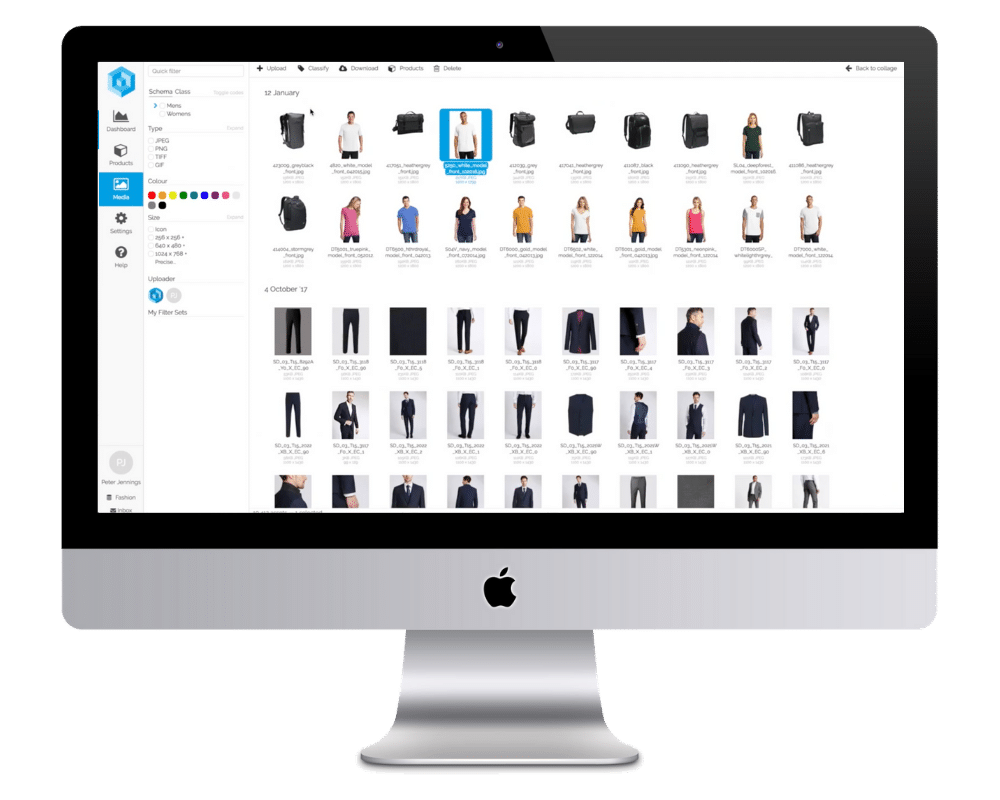- What is a digital twin?
- How are digital twins currently used?
- How do online stores receive their product images?
- Bridging the gap
1. What is a digital twin?
A digital twin is a true visual representation of a product, accurately capturing details and functionality depending on the type of product. It provides a virtual model to reflect all aspects of a physical object. Since digital twins mirror a product’s entire lifecycle, from design to finished product, they provide a critical digital asset. As you grow, they will likely find new applications to help educate the end user.
2. How are digital twins currently used?
Manufacturers use digital twins to capture visual representations of products. Various industries also leverage the technology for different purposes with the application of sensors that record movement and function. So, from healthcare to urban planning and the automotive industry to manufacturing, the digital twin offers a valuable digital asset for record-keeping. It also provides real time updates and information.
For example, in healthcare, it can provide insights into proper function. However, overall, digital twins provide the tools to digitally replicate any form that can then be exported into other visualization systems. We are beginning to see the exporting of digital twins to platforms such as the Amazon web system (AWS). Such a development opens possibilities for online stores and improved eCommerce capabilities.
3. How do online stores receive their product images?
Right now, professional photographers are the main provider of product images. Basically, sellers hire them to take ‘laydown shots’ for each product to create digital assets for their product descriptions, marketing, and catalogs. From there, lifestyle photos are created based on the laydown shots. Despite all the work, photographers are still the most affordable option today. However, it does create a less than perfect process, especially for companies with tens of thousands of SKUs.
4. Bridging the gap
As digital twins become more realistic and detailed, it becomes clear they really are the ideal image to share accurate, realistic product information. Unfortunately, we’re not there yet, which means we’ll continue to need photographers as the middleman in the creation of product digital assets. As technology advances and digital twins become less technical and more consumer-friendly, it will become a natural progression to create them for use on consumer-facing platforms like eCommerce sites and online catalogs.
Saving Time and Money
The cost and time savings realized by uploading digital twins directly to online stores eliminates several steps in the new product onboarding process. Although there will still be many industries where additional images are required, such as fashion and home décor, the digital twin will create a whole new level of product information.
DAM for Efficiencies
Until that day arrives, you need a tool that helps streamline the digital asset management process. Pimberly’s DAM bridges a sizable gap making it easier to organize, find, retrieve and share your digital assets. Product images, 3D images, and video are all managed in a central location, making it easier to upload information to online stores or from manufacturers’ systems to your DAM.
Centralized Location
You can share digital assets from a centralized location, enabling you to use them for eCommerce product information and to create compelling content for your marketing campaigns. Our Dam also prevents unnecessary duplication and increases efficiency. It is integrated with our PIM, so all your collateral is accessed from the same system. Both your structured and unstructured product data are accessible from one source, using the same search terms to make finding assets easy. You can also make real-time updates across multiple marketplaces and eCommerce platforms effortlessly.
Tens of Thousands of Assets
Even if you have tens of thousands of assets, you can quickly upload them into the PIM. Then, use digital asset previews to search and identify the images you need. The system supports all image and video types, as well as PDFs and Microsoft Office documents, making it easy to combine product images with the most suitable text format and version.
Automation
You can publish assets on a schedule directly and automatically from your PIM via your centralized storage system via FTP, SFTP, and our own cloud CDN. Therefore, you can do this confidently. In essence, knowing all information comes from a single asset source is beneficial for consistency and proper formatting across all your selling channels.
When the time comes for digital twins to become more consumer-friendly in the not so distant future, our DAM/PIM combo is ready to take on this new digital asset format.












